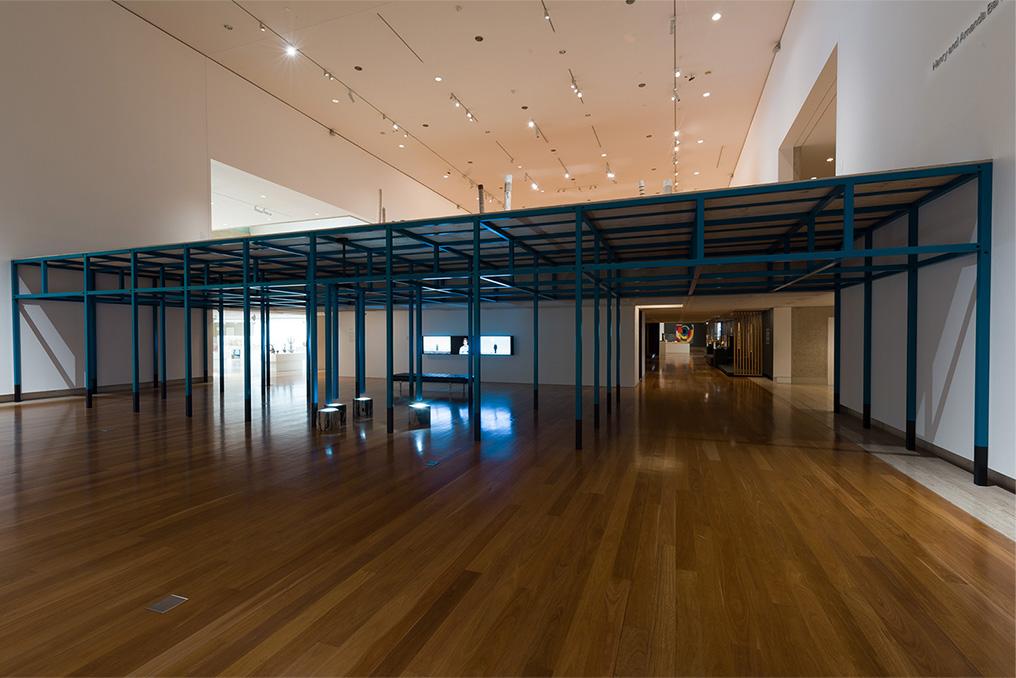Boedi Widjaja
APT9
Born 1975 Solo, Indonesia
Lives and works in Singapore
The experiences of displacement, isolation, travel, and bridging multiple cultures have defined much of Boedi Widjaja’s practice. Widjaja was born in Solo City, Indonesia, to ethnically Chinese parents. To avoid the racial tensions under President Suharto’s New Order, he was sent to Singapore as a young boy, where he lived apart from his family. His works often refer obliquely to this autobiographical history or to the feelings of anxiety and estrangement he experienced. Widjaja trained as an architect and also has a background in graphic design; the techniques, materials and tools of drawing have subsequently become a defining element of his artistic practice. This is expressed through a broad range of media, from photography and text to compelling installations and ‘live art’, with an emphasis on process and bodily engagement.

Boedi Widjaja / Singapore b.1975 / Black—Hut, Black—Hut 2018–19, installed for APT9, QAG, 2018 / Photograph: Natasha Harth, QAGOMA
Boedi Widjaja’s Black—Hut, Black—Hut 2018–19 is an architectural installation that visually extends the overhang of the Gallery’s mezzanine with a black concrete platform, treated with salt to prompt changes in the surface. The structure’s supporting columns resemble the raised flooring in various vernacular architectures, including the Queenslander house, the Javanese joglo, the Malay attap found in the fishing villages of Singapore, and ground-level community spaces of Singapore’s concrete apartment blocks.
Born in Solo City, Indonesia, Widjaja was placed in guardianship arrangements in Singapore at a young age by his Chinese–Indonesian parents, who were fearful for their child’s safety amid heightened ethnic tensions at home. The artist cites the challenges of being separated from his parents, learning new languages, moving homes frequently, and adapting to new cultures as experiences that inform his practice, in particular, his ongoing interrogations of house, home and homeland.
Accordingly, the supporting structure of Black—Hut, Black—Hut is painted turquoise to match a colour found in architecture throughout Solo City, including Widjaja’s childhood home and the majestic Surakarta palace. The underside of the installation also incorporates a ‘sound column’ of recomposed recordings of traditional Javanese gamelan percussion instruments. Base footings made of mineralised, petrified wood complement the concrete above, both being material evidence of transformation and change. The footings are pivoted to have one side facing north, in reference to the direction wooden houses in Brisbane historically tended to be built. The main pillars, based on the sakaguru that support the roof of the joglo, stop just shy of the footings. Centring the work is important to the artist because of his loss of home, but at the same time, unsupportive pillars and invisible sound columns indicate the artist’s degree of distance from a core identity, as is often symptomatic of the diaspora experience.
Co-commissioned for APT9 and Singapore Biennale 2019.
